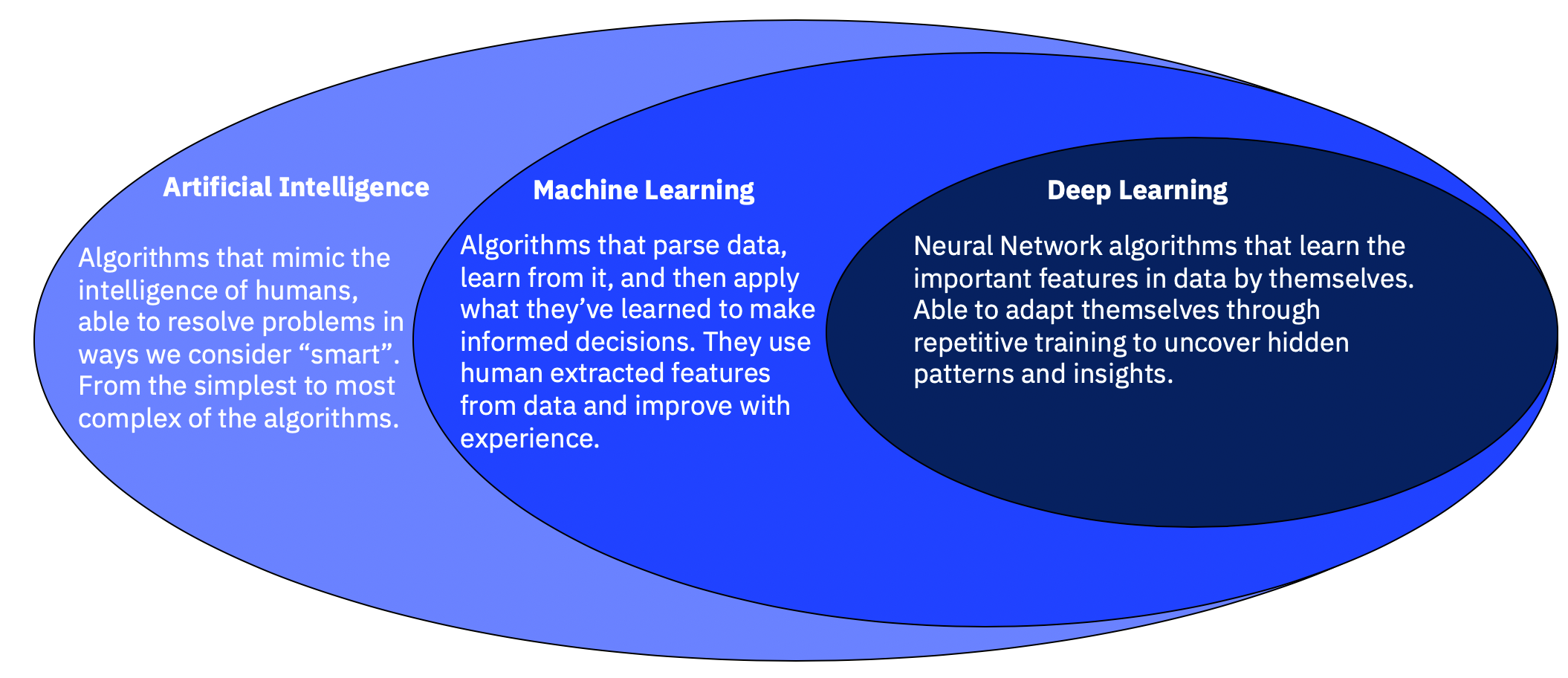Artificial intelligence (AI) and machine learning (ML) are two buzzwords that have been dominating the tech world in recent years. But what exactly do they mean? AI refers to the ability of machines to perform tasks that typically require human intelligence, such as visual perception, speech recognition, decision-making, and language translation.
On the other hand, ML is a subset of AI that focuses on teaching machines to learn from data and make decisions based on that learning. In simpler terms, ML is a technique that allows computers to learn from experience and improve their performance over time. In this article, we will dive deeper into these concepts and explore how they are changing the way we interact with technology.
AI (Artificial Intelligence) and machine learning are two closely related concepts in the field of computer science. AI refers to the development of computer systems that can perform tasks that typically require human intelligence, such as visual perception, speech recognition, decision-making, and language translation. On the other hand, machine learning is a subset of AI that involves the use of algorithms and statistical models to enable computers to learn from data and improve their performance over time. In simple terms, AI is the broader field that encompasses machine learning as one of its key components.

What is AI and Machine Learning?
Artificial Intelligence (AI) and Machine Learning (ML) are two terms that are rapidly gaining popularity in the technology world. AI refers to the creation of machines that can think and learn like humans, whereas ML is a subset of AI that involves the development of algorithms that enable machines to learn from data and improve their performance over time.
Understanding AI and Machine Learning
AI and ML are technologies that enable computers to perform tasks that typically require human intelligence, such as understanding natural language, recognizing images, and making predictions based on data. The key difference between AI and ML is that AI involves the creation of machines that can simulate human intelligence, while ML focuses on developing algorithms that enable machines to learn from data and improve their performance over time.
To understand how AI and ML work, it is important to understand the concept of data. Data is any information that can be collected and analyzed, such as text, images, and videos. AI and ML algorithms use this data to learn from patterns and make predictions, such as identifying fraudulent behavior, recommending products, and predicting customer behavior.
The Benefits of AI and Machine Learning
AI and ML have numerous benefits for businesses and individuals alike. For businesses, AI and ML can help streamline operations, reduce costs, and improve customer experience. For individuals, AI and ML can provide personalized recommendations and improve the quality of life.
One of the key benefits of AI and ML is their ability to automate repetitive tasks and free up time for humans to focus on more complex tasks. For example, chatbots can handle customer service inquiries, while AI-powered robots can perform repetitive tasks in manufacturing plants.
Another benefit of AI and ML is their ability to process vast amounts of data and make predictions based on patterns. This can be particularly useful in industries such as healthcare, where AI and ML can help identify potential health issues before they become serious.
AI and Machine Learning vs. Traditional Programming
Traditional programming involves writing code that tells a computer what to do under specific conditions. This approach is effective for solving well-defined problems, but it is not well-suited for tasks that require flexibility and adaptability.
AI and ML, on the other hand, are designed to learn from data and adapt to changing circumstances. This makes them ideal for tasks such as image recognition, speech recognition, and natural language processing.
Another key difference between traditional programming and AI and ML is that traditional programming relies on explicit instructions, while AI and ML rely on implicit instructions. This means that AI and ML can learn from data without being explicitly told what to do.
The Future of AI and Machine Learning
The future of AI and ML looks bright, with many new applications on the horizon. One area that is expected to see significant growth is the use of AI and ML in healthcare, where they can help diagnose diseases and develop personalized treatment plans.
Other areas where AI and ML are expected to have a significant impact include autonomous vehicles, financial services, and cybersecurity. As these technologies continue to evolve, they will become increasingly sophisticated and capable of performing more complex tasks.
The Challenges of AI and Machine Learning
Despite the many benefits of AI and ML, there are also several challenges that must be addressed. One of the biggest challenges is ensuring that these technologies are used ethically and responsibly.
Another challenge is the potential for biases in data, which can lead to discriminatory outcomes. To address this challenge, it is important to ensure that AI and ML algorithms are trained on diverse datasets and that they are regularly audited for bias.
Conclusion
AI and ML are two technologies that are rapidly transforming the world around us. They have the potential to revolutionize industries, streamline operations, and improve the quality of life for individuals. As these technologies continue to evolve, it will be important to address the challenges they pose and ensure that they are used ethically and responsibly.
Frequently Asked Questions
Artificial Intelligence (AI) and Machine Learning (ML) are two of the most talked-about terms in the world of technology. They have revolutionized the way we interact with machines. Here are some frequently asked questions about AI and ML:
1. What is the difference between AI and ML?
AI refers to computer systems that can perform tasks that typically require human intelligence, such as visual perception, speech recognition, decision-making, and language translation. ML is a subset of AI that involves a computer system learning to perform a task without being explicitly programmed to do so. In other words, ML is a way to achieve AI.
AI is the larger concept of creating machines that can work intelligently, while ML is a specific approach to building those machines by giving them the ability to learn from data.
2. What are the types of AI and ML?
There are three types of AI: narrow or weak AI, general or strong AI, and super AI. Narrow AI is designed to perform a specific task, while general AI is designed to perform any intellectual task that a human can do. Super AI is the hypothetical future development of AI that surpasses human intelligence.
Similarly, there are three types of ML: supervised learning, unsupervised learning, and reinforcement learning. Supervised learning involves training a model with labeled data. Unsupervised learning involves training a model with unlabeled data. Reinforcement learning involves training a model through trial and error.
3. What are the applications of AI and ML?
AI and ML have a wide range of applications across various industries. They are used in healthcare for disease diagnosis and personalized treatment. They are used in finance for fraud detection and risk management. They are used in transportation for self-driving cars and traffic management. They are used in customer service for chatbots and virtual assistants.
AI and ML are also used in education, agriculture, manufacturing, and many other fields.
4. What are the challenges of AI and ML?
One of the biggest challenges of AI and ML is data bias. This occurs when the data used to train the model is not representative of the real-world data, leading to inaccurate predictions. Another challenge is the lack of interpretability. Some AI and ML models are considered “black boxes” because it is difficult to understand how they arrive at their conclusions.
Privacy and security are also major concerns with AI and ML. As these technologies become more prevalent, there is a risk of them being used for malicious purposes, such as cyberattacks or surveillance.
5. What is the future of AI and ML?
The future of AI and ML is exciting and full of possibilities. As technology advances, we can expect to see more sophisticated AI and ML applications in various industries. We may also see the development of super AI, which has the potential to solve some of the world’s biggest problems.
However, the future of AI and ML also brings ethical and societal challenges that need to be addressed. It is important to ensure that these technologies are developed and used in a responsible and ethical manner.
In conclusion, AI and machine learning are revolutionizing the way we interact with technology. These technologies are based on the idea that machines can learn from experience, just like humans, and make informed decisions without being explicitly programmed. By using AI and machine learning, we can create intelligent systems that can handle complex tasks and improve their performance over time.
As AI and machine learning continue to evolve, we can expect to see more advanced applications and use cases. From self-driving cars to personalized recommendations, these technologies are transforming industries and changing the way we live and work. As such, it is important to stay up-to-date with the latest developments in this field, to ensure that we are able to take advantage of the benefits that AI and machine learning have to offer.
In conclusion, AI and machine learning are important technologies that are changing the way we interact with the world around us. By understanding these technologies and staying up-to-date with the latest developments, we can ensure that we are well-positioned to take advantage of the benefits they offer. Whether it’s improving efficiency and productivity in the workplace or enhancing our daily lives, AI and machine learning are poised to play a major role in shaping the future.

